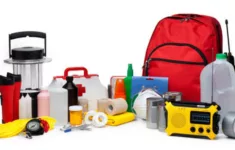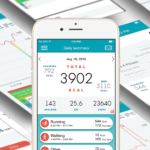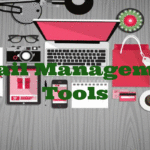Do you have a survival kit at the ready?
If not, you’re not alone. According to FEMA, the American government’s primary disaster relief agency, more than 60% of Americans do not practice for natural disasters likely to affect them — such as hurricanes on the Atlantic seaboard and earthquakes in California.
Columbia University, an American higher education institution based in New York City, reports that 65% of Americans have inadequate disaster supplies and plans. This figure has remained stagnant for a decade.
The good news: It’s quite easy to build a survival kit that can sustain you for days or even weeks away from home, in a variety of challenging conditions. Your kit absolutely must contain these six essential items.
1. Basic Medical Supplies and Medications
You shouldn’t wait for a disaster to build a basic first aid kit and stash it in your car or a convenient place in your home.
A good first aid kit includes everything you’re likely to need to address minor injuries and illnesses: sterile bandages, medical tape, over-the-counter pain medication, medications for cold and flu, gauze and sterile scissors, antibacterial gel or spray, alcohol pads, and the like.
If you or your close family members require prescription medication, make sure you have an adequate supply of that as well — at least seven days’ worth.
2. A Bright, Durable Flashlight
When disaster strikes, the electric grid typically fails early and remains out of commission for days. Since you’ll need to move around at night, you can’t call your survival kit complete until it’s stocked with a bright, long-lasting flashlight — ideally, one that’s bright enough to work by. Check out this roundup of the brightest flashlights on the market today for ideas.
3. External Charging Devices for Cell Phones
Telecommunications networks typically have their own power supplies, so your cell phone might work even after the electricity goes out. Make sure your phone has enough juice to outlast the outage — invest in an external cell phone battery or charging pack, preferably one with enough life for several full charges. (In an emergency, keep your phone off or in airplane mode unless you’re expecting emergency communications or need to make a call.)
4. Radio Equipment
If the cell network is down or you’re headed somewhere with poor cell service on a good day, bring a two-way radio and a hand-crank AM/FM receiver. You’ll need the former to communicate with fellow citizens and the latter to catch emergency broadcasts.
5. Potable Water
The general rule of thumb is one gallon of potable water per adult, per day. In dry or high-altitude environments, you’ll need more than that. Distilled water is preferable, but bottled tap water works in a pinch. Since water is heavy and space-intensive, experts recommend limiting your supply to three days in an evacuation situation.
6. Non-Perishable Food Items
Stock up on non-perishable, lightweight food items that require little or no cooking or added water. Canned beans and vegetables, soups, nutrition bars, meal replacement shakes, and even meals ready to eat (MREs) are all suitable. Don’t forget a manual can opener!
Are any of these essentials missing from your survival kit? Let us know below.








